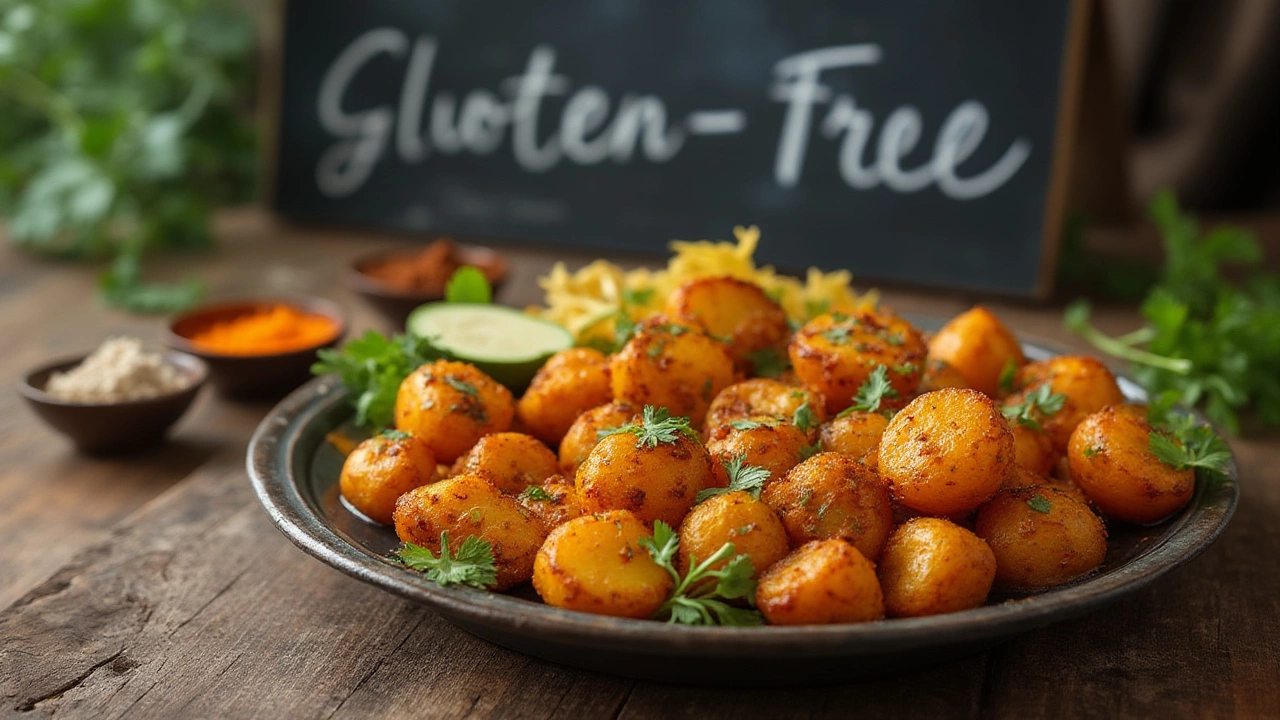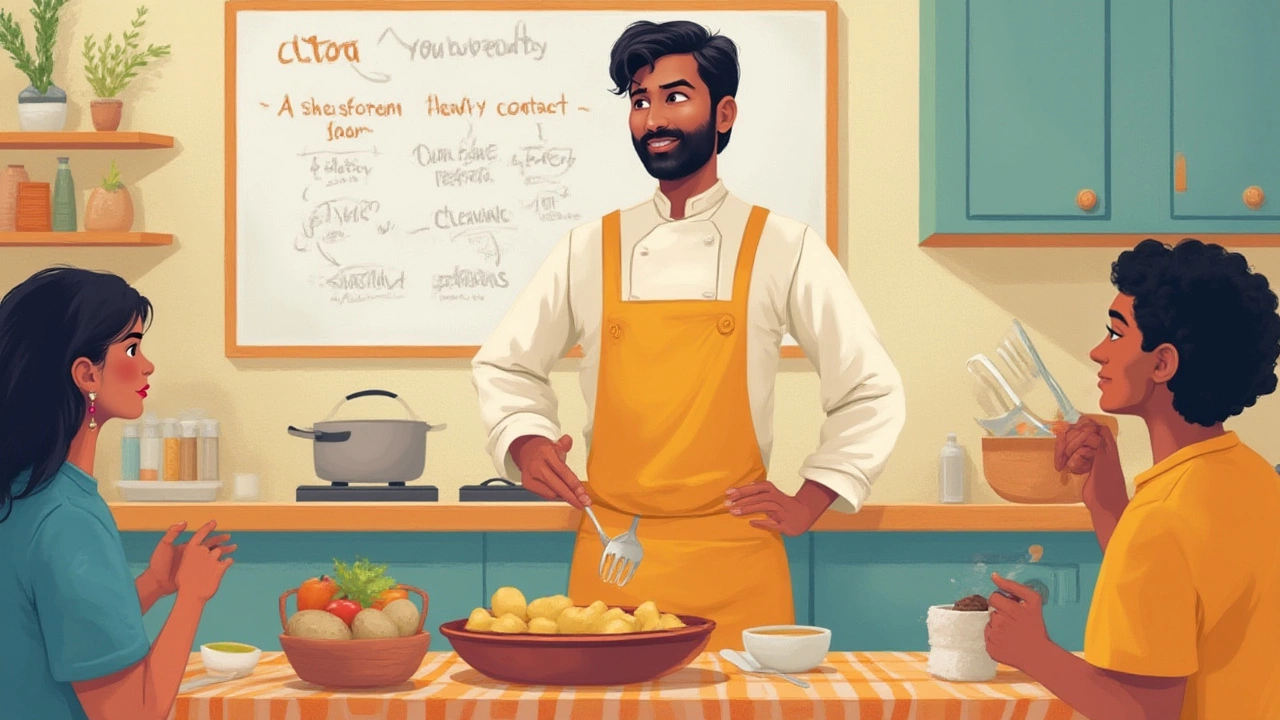Ask anyone who’s suddenly forced to dodge gluten: everything you eat becomes an interrogation. That big, fluffy baked potato staring at you from the dinner plate brings questions. Can I eat that? Or is it going to trigger the same annoying, exhausting gluten reaction—bloating, headaches, those cramps nobody wants to talk about at brunch? So, what’s the real answer? Are potatoes really gluten free, or should they get the side-eye like croutons and white bread?
What Exactly Is Gluten, and Why Do People Worry About It?
Picture gluten as a sticky spiderweb hiding inside grains like wheat, barley, and rye. It’s not a monster—just a protein. But for some people, that protein acts like a spark on dry grass: it sets off a wildfire of symptoms. There’s celiac disease, which is a true immune system glitch where gluten does damage, and there’s gluten sensitivity, which is way less dramatic but still uncomfortable. Around 1% of people worldwide have celiac disease—that’s millions, if you’re counting. Another pile of folks dodge gluten because it simply makes them feel lousy. And let’s face it: gluten isn’t limited to bread. Sauces, soups, snacks, and some surprising things (like soy sauce or even licorice) can sneak it in.
This gluten-free trend isn’t just a Hollywood fad or a Pinterest craze. It’s about people taking control of symptoms, or in the case of celiac disease, avoiding long-term harm like organ damage or nutrient shortages. The tricky part? People hear so many mixed messages. You might get advice from Google, your best friend who read a blog, or even that super-enthusiastic health nut at work. Let’s clear the fog by cutting straight to the facts—especially when it comes to potatoes.
Are Potatoes Gluten Free? The Simple Truth
Time for the answer everyone’s waiting for: potatoes are naturally gluten free. Yes, you read that right. White potatoes, yellow ones, red, purple, fingerling, Yukon Gold—they all come from the ground totally gluten-free. Potatoes don’t contain wheat or any other gluten grain relatives. They’re just a starchy tuber, and they play nicely with celiac and gluten intolerance diets.
The reason potatoes don’t have gluten is that gluten forms only in certain grains. If you pulled up a potato and ate it raw (gross, but you could), there’d be zero gluten. When you bake, boil, roast, or mash it—still no gluten magically appears. Even sweet potatoes and yams, which sometimes get lumped together, are gluten free by nature too.
Confused because you’ve seen “potato bread” or “potato pancakes” that aren’t considered gluten free? That’s because those recipes often mix in flour or other ingredients containing gluten. The potato is innocent—the stuff added afterward is the culprit. That’s a huge difference.

How Potatoes Can Become a Gluten Risk: Cross-Contact and Hidden Ingredients
Here’s where things go from simple to sneaky. Potatoes by themselves are safe. But the kitchen is full of traps, especially if you or someone you cook for can’t tolerate any gluten. Ever seen fries cooked in the same oil as battered fish? That oil picks up gluten from the breading, contaminating the fries. Same goes for mashed potatoes mixed with gravy thickened with flour, or potato chips dusted with a “seasoning blend” that quietly adds wheat starch.
- At restaurants, always ask how potatoes are prepared. Sometimes cooks toss them in seasoned flour before frying to add crunch.
- For instant mashed potatoes, check the label—some brands use wheat flour as a thickener. You want “100% potatoes” or a clear gluten-free label.
- Watch out for potato soups. The creamy texture often comes from a flour-based roux, so unless it’s certified gluten free, be wary.
- Baked potatoes are nearly always safe, but toppings can trip you up (think breadcrumbs, or even salad dressing on a “loaded” version).
There’s another situation: shared equipment. If a food processor, kitchen counter, or grill isn’t cleaned between uses, wheat flour might stick around and end up on your spuds. Folks with celiac know to go overboard—use separate utensils, scrub everything, and avoid shared sauces.
Here’s a quick breakdown of potato scenarios in a handy table:
| Potato Dish | Gluten Risk Level | Why? |
|---|---|---|
| Plain baked potato | Low | Just potato, no added gluten. |
| French fries | Medium to High | Depends on shared fryer and added seasonings. |
| Instant mashed potatoes | Medium | Check labels for wheat ingredients. |
| Potato chips | Medium | Some flavors contain wheat or are made with cross-contact. |
| Potato soup | High | Often thickened with flour. |
Tips for Enjoying Potatoes on a Gluten-Free Diet
So, you want potatoes and you want to steer clear of gluten. Don’t worry, you don’t have to eat boring baked potatoes for life. Here are a few ways to make sure potatoes stay safe and interesting on your table:
- Shop smart: Pick whole, unprocessed potatoes from the produce section. If the ingredient list includes more than “potato,” be suspicious.
- Check labels: For packaged potato products like chips, fries, or instant mash, scan for wheat, barley, rye, or “malt” on the label. Look for a gluten-free certification if you’re extra sensitive.
- At home, get creative: Roast potatoes with olive oil, rosemary, and garlic. Or try homemade hash browns—shred potatoes, squeeze the water out, fry in a nonstick pan. No wheat required!
- Restaurants: Don’t be shy. Ask questions, even if you feel silly. I’ve learned the hard way (thanks, Harrison, for eating my fries when I had to give them up last minute because the kitchen used the same oil for everything).
- DIY seasonings: Mix your own spice blends at home, so you know there’s no mystery flour sneaking in.
- Meal prep: Make extra roasted or mashed potatoes, cool, and use in salads or omelets. Cold potatoes actually form “resistant starch,” which can be good for your gut.
Pro tip, especially for singles and couples: Potatoes come in all sizes. Grab a few small ones if you don’t plan on feeding a crowd, or pick big baking potatoes to prep once and eat all week. If your taste runs fancy, try purple potatoes or fingerlings—they taste great and look like you suddenly have chef skills.

The Final Word: Foods That Are Gluten Free and Delicious Potato Recipes to Try
Potatoes are a lifesaver for anyone who has to ditch gluten but still wants comfort, satisfaction, and—let’s be honest—something to soak up that dairy-free gravy. If you need even more inspiration, here are a few potato dishes you can try at home that are naturally gluten free:
- Classic roasted potatoes: Chop, toss with olive oil and herbs, roast at 425°F until crispy. No flour, no fuss.
- Twice-baked potatoes: Scoop out baked potatoes, mash with safe ingredients (cream, cheese, chives), refill skins, bake again.
- Herby potato salad: Boil baby potatoes, cut up, dress with Dijon, olive oil, capers, and herbs.
- Loaded “nacho” potatoes: Roast potato wedges and top with black beans, avocado, salsa, and your favorite shredded cheese.
- Mediterranean baked potatoes: Stuff baked potatoes with chopped cucumber, tomatoes, olives, and crumbled feta, then drizzle with olive oil and lemon.
And for parents of picky eaters (or snack monsters), try making homemade oven fries. Slice potatoes into sticks, toss with oil and a sprinkle of paprika, bake on a tray, and watch them disappear. Tip: to get super crisp edges, soak the raw potato slices in cold water for 30 minutes, then dry before baking. Science even backs up that cold soak—it removes some starch, helping with crispness.
So yeah, potatoes are safe if you keep an eye out for the troublemakers hiding in packaged foods or cross-contamination. With a dash of attention and a pinch of creativity, you’ll find potatoes are not only gluten free, but pretty much endlessly versatile for breakfasts, quick snacks, and big family dinners. Now, pass the mashed potatoes—I’m hungry just writing this!